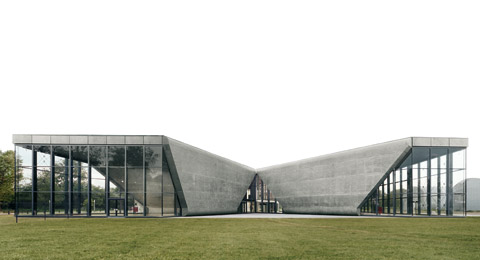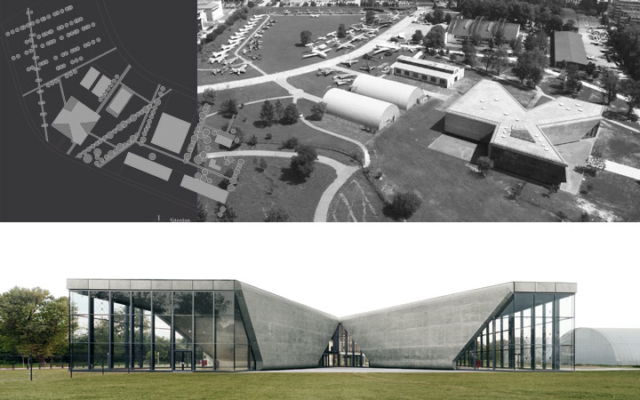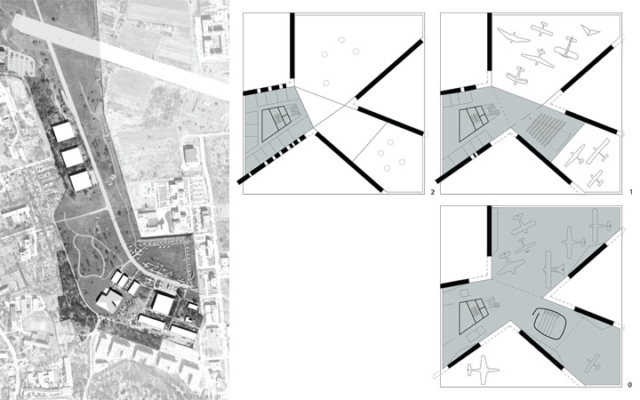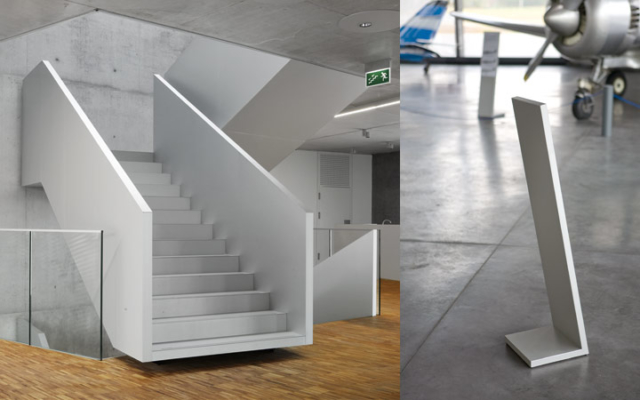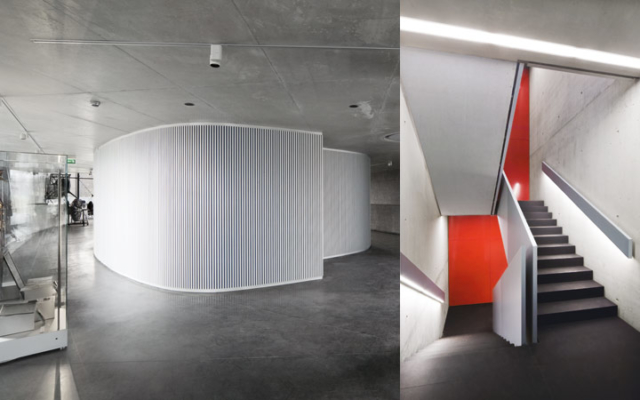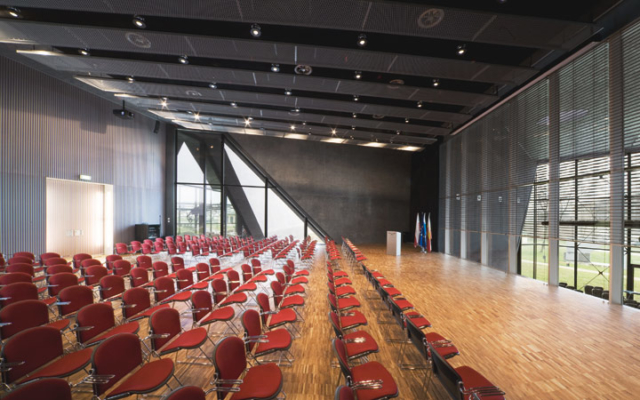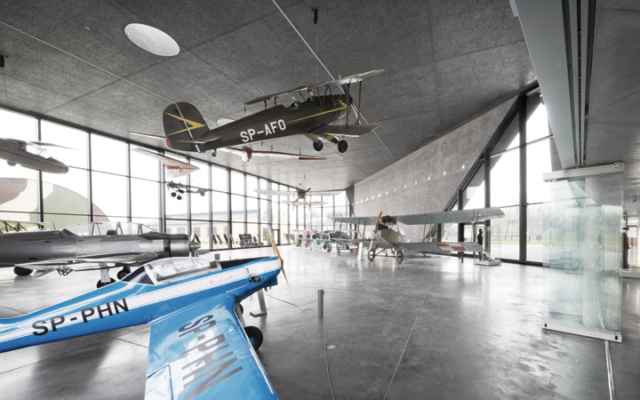Museum and Aviation Exhibition Park Krakov – Poljska
1.nagrada na konkursu 2005.godine, završeno 2010.godine
Arhitekte: Pysall Architekten / Autor projekta: Pysall . Ruge Architekten i Bartlomiej Kisielewski
Projektantski tim: Justus Pysall, Peter Ruge, Bartlomiej Kisielewski, Katarzyna Ratajczak, Mateusz Rataj, Alicja Kepka.
Program: Muzej vazduhoplovstva sa izložbenim prostorom | bioskop | konferencijski blok | biblioteka | prodavnica suvenira | kafeterija | područje restauracije | administracija | Vazduhoplovni park | Transformacija aerodroma u vazduhoplovni park | spoljašnji izložbeno-rekreativni prostor
Površina: Muzej vazduhoplovstva: 4.504 m2; Vazduhoplovni izložbeni park: 6,19 hektara
Troškovi gradnje: Ukupno 13,0 milliona evra
Fotografije: Jakub Pierzchala & Marcin Przybylko
Copyrights Pysall Architekten
Lotnictva je jedan od najvećih muzeja vazduhoplovstva na svetu. Nalazi se u okviru očuvanih, istorijskih zgrada i hangara nekadašnjeg aerodroma Rakovice-Cizini u Krakovu, prvog aerodroma na poljskom terenu koji je izgrađen 1912. godine za potrebe aero flote broj 7 Austro-Ugarskog carstva. Konkurs za projekat nove glavne zgrade održan je 2005. godine kao prvi pan-evropski arhitektonski konkurs nakon ulaska Poljske u EU na kome je pobedio nemački arhitekta.
Muzej
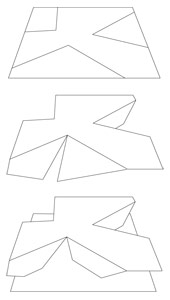 Nova zgrada muzeja vazduhoplovstva podržava ideju o letenju, duh lokacije i strukturu istorijskog aerodroma i sjedinjuje ove reference u jednu izražajnu i simboličku strukturu. Stari hangari su poslužili kao modularna matrica za osnovu nove zgrade (60x60m), kao i za visinu nove zgrade (12m). Iz ove matrice razvijena je velika građevina, skrojena i savijena poput papirnog aviona, sa trougaonim krilima od betona a ipak laganim kao vetrokaz ili propeler. Dimenzije i orjentacija ovih krila definisani su u skladu sa tri različite funkcije.
Nova zgrada muzeja vazduhoplovstva podržava ideju o letenju, duh lokacije i strukturu istorijskog aerodroma i sjedinjuje ove reference u jednu izražajnu i simboličku strukturu. Stari hangari su poslužili kao modularna matrica za osnovu nove zgrade (60x60m), kao i za visinu nove zgrade (12m). Iz ove matrice razvijena je velika građevina, skrojena i savijena poput papirnog aviona, sa trougaonim krilima od betona a ipak laganim kao vetrokaz ili propeler. Dimenzije i orjentacija ovih krila definisani su u skladu sa tri različite funkcije.
Dobijena je upotrebna površina od 4500m2 raspoređena na tri nivoa. Prožimanje prostora doprinelo je lakšoj orijentaciji posetilaca. Pri ulazu u zgradu otvaraju se dve mogućnosti: ulaz u edukativno krilo sa velikim 3D bioskopom i direktan pristup u izložbeni prostor sa avionima.
Sva krila su zastakljena i otvorena u svim pravcima. Na taj način izložbeni prostor je vizuelno povezan sa okolnim pejzažom i omogućene su vizure ka betoniranom uzletištu aerodroma i avionima izloženim u spoljašnjem prostoru. Avioni koji se nalaze u severnom krilu ne izgledaju ni malo napušteni, već kao da su smešteni u hangar, spremni da u bilo kom trenutku izađu na pistu.
Na prvom spratu se nalazi sala za konferencije sa 150 mesta, biblioteka, multimedijalni deo i restoran sa barom koji gleda na izložbeni prostor. Upravne prostorije su smeštene na drugom spratu i orijentisane su ka parku – izložbenom prostoru ili kroz kružne otvore ka nekadašnjem aerodromu. Novi muzej vazduhoplovstva ne izgleda kao „kuća“, već kao suptilna, funkcionalno – izražajna arhitektonska skulptura.
Energetski koncept
Održivost kroz jednostavnost i redukciju
Različite temperaturne zone, prirodna ventilacija i intenzivno korišćenje dnevne svetlosti umanjuju potrebu za energijom u izvornom obliku – upotreba prirodnih i dobro patiniranih i ostarelih materijala redukuje uticaj na okruženje i buduće troškove održavanja. Koncept je baziran na prirodnoj ventilaciji u sva tri krila. Samo bioskop i sala imaju dovod i odvod vazduha koji cirkuliše uz pomoć izmenjivača toplote sa snabdevanjem vazduha iz zemljišnog kanala. Ovo omogućava dovod toplog vazduha zimi i hladnog vazduha leti.
Krila se greju različito, zavisno od upotrebe prostora: temperatura u kancelarijama je 20°C, u edukativnom krilu je 18°C i u glavnom izložbenom krilu iznosi 15°C. Diferenciranjem temperature po potrebi, u odnosu na podjednako raspoređivanje toplote u svim prostorima (u proseku 20°C u svakoj prostoriji), uštedi se 40% energije za grejanje ovih velikih volumena visine 10 m i zapremine 10250 m3.
Betonski zidovi velikog skladišta i prirodna ventilacija omogućavaju hlađenje tokom letnjih noći. Izložbeni prostor, okrenut ka severu, sa površinom vrata od 200m2 je uvek dobro prirodno provetren tokom leta, i nema potrebe za veštačkom klimatizacijom.
Osim korišćenja dnevne svetlosti preko fasadnih površina i velikih svetlarnika, u celom objektu je realizovan i energetski efikasan sistem rasvete. Sistem podrazumeva komutatore i upotrebu sijalica za uštedu energije u kombinaciji sa detektorima pokreta.
Vazduhoplovni park
Avioni su postavljeni jedan do drugog duž nekadašnjeg kolskog puta koji vodi do piste. Njihova autentičnost čini da gotovo zaboravimo da se radi o izložbenim eksponatima. Pored uzletišta nalazi se osam istorijskih zgrada i hangara u kojima su izloženi dragoceni vazduhoplovni predmeti. Istorijski periodi i događaji vazduhoplovstva su sumirani u svakoj zgradi. Izlaganje eksponata je prošireno u spoljašnji deo preko velikih betonskih polja i na taj način je dobijen dodatni izložbeni prostor na otvorenom.
Pejzažne arhitekte iz ST Raum, Berlin, definisali su veliki vazduhoplovni izložbeni park površine 6Ha. Projektom je ostvarena veza između novoprojektovanih zgrada i postojećih objekata putem sređivanja starih trasa i formiranja novih staza unutar parka. Na ovaj način omogućena je tura kroz istoriju vazduhoplovstva. Staze između građevina u parku omogućavaju posetiocima da lagano sumiraju nagomilane utiske pre nego što dožive nove.
Muzeum Lotnictwa Polskiego
Museum of Aviation and Aviation Exhibition Park, Krakow – Poland
International competition 1st prize 2005, completion 2010
Architect | General planner: Pysall Architekten / Design Author: Pysall . Ruge Architekten with Bartlomiej Kisielewski
Project team: Justus Pysall, Peter Ruge, Bartlomiej Kisielewski, Katarzyna Ratajczak, Mateusz Rataj, Alicja Kepka-Guerrero
Brief: Museum of Aviation with exhibition area | cinema | conference area | library | museum shop | cafeteria | restoration area | administration | Aviation park | transformation of the airport into an aviation park | exterior exhibition recreation area
Size: Museum of Aviation: 4.504 m2; Aviation Exhibition Park: 6,19 hectares
Building cost: € 13,0 Million
Photo: Jakub Pierzchala & Marcin Przybylko
Copyrights Pysall Architekten
The Muzeum Lotnictwa is one of the largest museums of aviation in the world. It is located in historically preserved buildings and hangars of the former historic airfield of Rakowice-Cyzyny in Cracow, the first airfield on polish terrain, build in 1912 for the air fleet no. 7 of the Austrian-Hungarian Empire. In 2005 a competition was launched for the new main building – the first pan-European competition for architects, after the accession of Poland to the EU, to be won and realised by a German architect.
Museum
The idea of flying, the spirit of the place, the structure of the historic airfield – the new building for the Museum of Aviation takes up these references intellectually and synthesises them into an expressive and emblematic structure. The old hangars set the modular scale for the footprint (60×60 m) and the height (12m) for the new building. Developed from this modular scale – cut out and folded, as if made like a paper airplane, a large structure has arisen – triangular wings made of concrete and yet as light as a wind-vane or propeller. Size and orientation of the wings got developed out of three different functions. 4500sqm usable area on three floors is for disposition now. Intertwining spaces provide good orientation for the visitor.
Entering the building one has the choice to go into the education wing with a voluminous 3D-cinema or directly into the exhibition area with the planes. The wings are generously glazed, opening in all directions. The exhibition thus links visually with the landscape around it and offers a view to the apron and the planes on display outdoors. The airplanes in the North wing seem by no means enclosed, but rather having been placed in shelter, ready to roll out onto the runway at any time.
The first floor is occupied with the conference room seating 150 people, a bibliotheca, a multimedia section and a restaurant with bar over viewing the exhibition. The offices for administration are in the second floor offering views towards the park, into the exhibition or through bull’s eye windows onto the former airfield. The new museum for aviation appears not as a “house” – it yields a subtle functionally expressive architectural sculpture.
Energy Concept
Sustainability through simplicity and reduction
Different temperature zones, natural ventilation and intensive use of daylight minimize the need of energy at its source- the use of natural and well patinating and ageing materials reduces the impact of the environment and future maintenance costs. The concept is based on natural ventilation in all three wings. Only the cinema and the auditorium will get supply air and exhaust air by means of a heat exchanger with air supply from an earth channel. This allows for warm supply air in winter and cool air in summer.
The wings are heated differently, depending on their use: 20° C the offices, 18° C the Education Wing and 15° C the Main Exhibition Wing. Compared to an all-around 20° C room temperature, 40 % of the energy is conserved for heating these 10 m in high and up to 10,250 m³ volumns.
The big storage capacity of the concrete walls and natural ventilation provide, cooling during the night in the summer. Directed to the north and with a 200 m² big door, the exhibition is always throughout naturally ventilated during the summer and of no need for air conditioning.
Besides the generous use of daylight through the facade and big skylights; an energy-efficient light system is realized throughout the building. This includes light directing commutator sections and the use of energy saving lamps in combination with motion detectors.
Aviation Park
Airplanes are presented side by side on the outside along the former taxiway up to the runway. The authenticity nearly makes one forget that those are ‘just’ exhibits. Beside the airfield are eight historical buildings and hangars in which the exhibition of precious objects takes place. Episodes and themes of aviation are summed up in each building. Their exhibition is expanded to the outside with big concrete patches, giving space for additional open-air presentation. The landscape architects from ST raum a, Berlin, planned this six hectares large aviation exhibition park.
The design connects the new buildings with the existing buildings through the completion of old alleys and the creation of new park paths. A tour through the history of aviation is developed. The path between houses through the park gives the visitors time to process the accumulated impressions and then resume to take in new ones.


